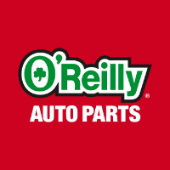-
Welcome to Auto Parts Forum
Whether you are a veteran automotive parts guru or just someone looking for some quick auto parts advice, register today and start a new topic in our forum. Registration is free and you can even sign up with social network platforms such as Facebook, X, and LinkedIn.
Common Causes of Oil Leaks
-
Similar Topics
-
By Mighty Auto Parts
The post
link hidden, please login to view appeared first on link hidden, please login to view. The vehicle received a full service including an oil and filter change. The system was leak checked and the engine 43ehad good oil pressure. Two days later, the customer calls reporting a loss of oil pressure symptom. Mechanic A says…a defective oil filter is the cause of the loss of oil pressure. Mechanic B says…a […]
The post
link hidden, please login to view appeared first on link hidden, please login to view.
link hidden, please login to view -
By Counterman
There is nothing simple about complex engine oil formulations. Effectively explaining to your customer how Valvoline’s Restore & Protect motor oil removes and prevents engine deposits may seem like a tough task.
Dr. Michael Warholic, global technology director for Valvoline Global Operations, emphasizes the importance of visual evidence
“Hey, look how this product performs,” said Warholic. “We have visuals showing that there’s a removal of deposits, that there is a reversing of the aging process in an engine. That’s a great case story to tell.”
Warholic talks with Babcox Content Director Jason Morgan about the formulation process that sets Restore & Protect apart. The process involves a balance of various additives and components, tested rigorously in both laboratory and real-world conditions. It also involves combining base oils, viscosity modifiers, and a unique blend of additives. These additives include detergents to clean deposits, friction modifiers to reduce engine strain, and antioxidants to combat the breakdown of oil components. The goal was to create a motor oil that not only prevents the formation of new deposits but also removes existing ones, effectively rejuvenating the engine.
“We wanted to do something different than everybody else,” said Warholic. “That’s what Restore and Protect does. It differentiates us from our competitors. It does something that no other oil does in the marketplace right now.”
Restore & Protect could be considered a new category of motor oil that bridges the gap between conventional oils and high-mileage formulations. While high-mileage oils are designed for older engines, Restore & Protect is suitable for both new and aging engines. Its dual function of preventing new deposits and reversing existing ones makes it a versatile choice for a wide range of vehicles.
This innovation is particularly valuable for engines operating under severe conditions, such as those used for towing or in high-traffic areas. The oil’s ability to handle these demanding environments while maintaining engine cleanliness offers a significant advantage over standard motor oils.
“There’s always engine oil. Formulating is a little bit about give and take. The engine is a very complex machine. You have different temperatures, different pressures. It is really a very interesting field when you start digging into it.”
“We do tons of data-driven testing. That’s what we live for.”
The post
link hidden, please login to view appeared first on link hidden, please login to view.
link hidden, please login to view -
By jack wilson
As a truck owner, maintaining your vehicle's health is crucial to its longevity and performance. One of the most important aspects of truck maintenance is regular oil changes. In this blog, we'll explore the benefits of regular truck oil changes and answer the question, "What are the benefits of regular link hidden, please login to view?" Here are the top 8 facts you need to know.

-
By Mighty Auto Parts
The post
link hidden, please login to view appeared first on link hidden, please login to view. Nothing is more frustrating for the vehicle owner than a puddle of oil on their carport fl oor or the stench of oil on a hot engine or exhaust system following a lube service. It is equally frustrating for the lube shop asthey must correct the problem, losing billable labor time. We have seen customers […]
The post
link hidden, please login to view appeared first on link hidden, please login to view.
link hidden, please login to view
-



Recommended Posts
Create an account or sign in to comment
You need to be a member in order to leave a comment
Create an account
Sign up for a new account in our community. It's easy!
Register a new accountSign in
Already have an account? Sign in here.
Sign In Now